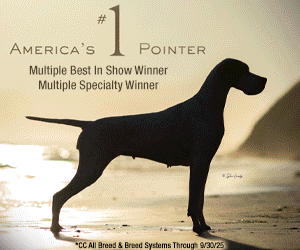Co-Ownerships – 3 Steps for Creating a Long Relationship
320 – February 2017
By Debra Vey Voda-Hamilton, Esq./Mediator
 Co-ownership is a means of sharing and protecting a dog you have bred. It can be a desirable relationship or the polar opposite. Feelings about sharing ownership of one’s dog lie in how parties have experienced similar relationships. Is it meant to protect the dogs and their owners or to rule how one party cares for their dog? Is it ownership by democracy or dictatorship? Co-ownerships that are entered into with full disclosure and discussion tend to succeed. Those entered into simply because the owner wants the dog or the breeder wants to retain ownership usually end in disaster.
Co-ownership is a means of sharing and protecting a dog you have bred. It can be a desirable relationship or the polar opposite. Feelings about sharing ownership of one’s dog lie in how parties have experienced similar relationships. Is it meant to protect the dogs and their owners or to rule how one party cares for their dog? Is it ownership by democracy or dictatorship? Co-ownerships that are entered into with full disclosure and discussion tend to succeed. Those entered into simply because the owner wants the dog or the breeder wants to retain ownership usually end in disaster.
Unfortunately, most shared relationships do not take the time to discuss the terms of the agreement. If you don’t discuss the terms before you enter into a contract, it may be destined to fail. Create a document that outlines how you will continue the con- versation going forward. This article gives you three tips to help you enter into a shared ownership that will remain intact far into the future.
When entering into a co-ownership ask questions. What are your responsibilities, costs and benefits as a member of this group? Is the ownership for breeding, showing or owning purposes? Understanding everyone’s role maintains relationships. If misunderstandings arise, go back to the agreement and see what was said and understood at the time. You may also want to find a facilitator to guide a conversation if the agreement was never written down or is now misconstrued.
In most cases, the only evidence of a shared ownership is the AKC papers and it is silent as to the terms of the co-ownership. The AKC does not get involved in co-ownership disagreements, disputes or misunderstandings.
To establish and maintain a shared ownership relationship the parties must have a conversation regarding their understanding of the agreement. Creating a written document that memorializes these understandings is invaluable. Circulating this document among the parties involved will go a long way in helping foster trust and nip any misunderstandings or disagreements that arise. Request a written acknowledgement of the terms of this ownership. Even a simple email reflecting what the parties un- derstand to be true is helpful. This document can be referred to in the event a disagreement or misunderstanding arises. It helps quickly defuse disagreements and guides the conversation toward resolution.
Click here to read the complete article320 – February 2017
Short URL: https://caninechronicle.com/?p=119808
Comments are closed











